| 29th G8 summit | |
|---|---|
 | |
 | |
| Host country | France |
| Date | 1–3 June 2003 |
| Follows | 28th G8 summit |
| Precedes | 30th G8 summit |
The 29th G8 summit was held in Évian-les-Bains, France, on 1–3 June 2003. As is usual for G8 summits, there were a range of protests.
| 29th G8 summit | |
|---|---|
 | |
 | |
| Host country | France |
| Date | 1–3 June 2003 |
| Follows | 28th G8 summit |
| Precedes | 30th G8 summit |
The 29th G8 summit was held in Évian-les-Bains, France, on 1–3 June 2003. As is usual for G8 summits, there were a range of protests.

The Group of Seven (G7) was an unofficial forum which brought together the heads of the richest industrialized countries: France, Germany, Italy, Japan, the United Kingdom, the United States, and Canada starting in 1976. The G8, meeting for the first time in 1997, was formed with the addition of Russia. [1] In addition, the President of the European Commission has been formally included in summits since 1981. [2] The summits were not meant to be linked formally with wider international institutions; and in fact, a mild rebellion against the stiff formality of other international meetings was a part of the genesis of cooperation between France's president Valéry Giscard d'Estaing and West Germany's chancellor Helmut Schmidt as they conceived the initial summit of the Group of Six (G6) in 1975. [3]
The G8 summits during the twenty-first century have inspired widespread debates, protests and demonstrations; and the two- or three-day event becomes more than the sum of its parts, elevating the participants, the issues and the venue as focal points for activist pressure. [4]
Official G8 Summit magazines which have been published under the auspices of the host nations for distribution to all attendees since 1998; the 2008 edition was published by Prestige Media. [5]
The G8 is an unofficial annual forum for the leaders of Canada, the European Commission, France, Germany, Italy, Japan, Russia, the United Kingdom, and the United States. [2]
The 29th G8 summit was the last summit for Canadian Prime Minister Jean Chrétien.
These summit participants are the current "core members" of the international forum: [6] [7] [8]
Traditionally, the host country of the G8 summit sets the agenda for negotiations, which take place primarily amongst multi-national civil servants in the weeks before the summit itself, leading to a joint declaration which all countries can agree to sign.
Reconciliation amongst the G8 leaders was the top priority in the wake of the beginning of the Iraq War. The G8 had sharply divided [9] over the American-led invasion. [10] Chirac's broad agenda was organized under four main themes — solidarity, responsibility, security, and democracy. [11]
The summit was intended as a venue for resolving differences among its members. As a practical matter, the summit was also conceived as an opportunity for its members to give each other mutual encouragement in the face of difficult economic decisions. [3]

During the protests, some manifestations went out of order as Swiss towns have been sacked by rioters. An accident also occurred during protest at the Aubonne bridge in Switzerland between Lausanne and Geneva, in which two activists suspended themselves from the bridge via a rope, with the rope stretching across the bridge, displaying a banner and obstructing traffic on the highway with the highest traffic density of Switzerland. Some protestors were arrested. One of the policemen, unaware people were attached to the rope, cut it. As a result, one of the protestors, Briton Martin Shaw, to plunge 20m into a rocky river and suffered multiple fractures. The other activist, German Gesine Wenzel, was caught by other protestors and could later abseil safely. In a ruling on 17 February 2006 a judge acquitted the two police officers found responsible on the grounds that their actions had been based on "a series of unfortunate misunderstandings" and therefore were not criminal. Indeed, as the anti-G8 manifestations were difficult to handle by their scales and by the seriousness of the disorders they caused many policemen (including the one who cut the rope) came from the German speaking part of Switzerland. The linguistic barriers, added to the stress of the situation (a blocked highway that could have resulted in many deaths) were considered by the court as critical in the misunderstandings that generated the accident. [12] [13]
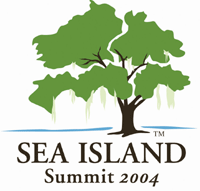
The 30th G8 summit was held in Sea Island, Georgia, United States, on June 8–10, 2004.

The 28th G8 Summit was held in Kananaskis, Alberta, Canada, on June 26–27, 2002.

The 26th G8 summit was held in Nago, Okinawa Prefecture, Japan, on 21–23 July 2000.

The 21st G7 summit was held on June 15–17, 1995 in Halifax, Nova Scotia, Canada. The venue for this summit meeting was Summit Place in Halifax. It was labelled by Prime Minister Jean Chrétien as a "Chevrolet Summit", using a utilitarian automobile as a metaphor for the summit being less expensive than previous summits in Versailles and Venice.
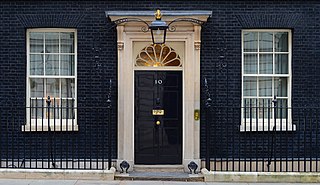
The 3rd G7 Summit was held in London, United Kingdom between 7–8 May 1977. The venue for the summit meetings was the British Prime Minister's official residence at No. 10 Downing Street in London.
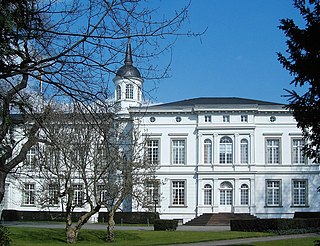
The 4th G7 Summit was held at Bonn, West Germany between 16 and 17 July 1978. The venue for the summit meeting was at the former official residence of the Chancellor of the Federal Republic of Germany in Bonn, the Palais Schaumburg.

The 6th G7 Summit was held at Venice, Italy between 22 and 23 June 1980. The venue for the summit meetings was the island of San Giorgio Maggiore in the Venetian lagoon.

The 7th G7 Summit was called the Ottawa Summit, and was held in Montebello, Quebec, Canada and nearby Ottawa between July 20 and 21, 1981. The venue for the summit meetings was the Château Montebello.
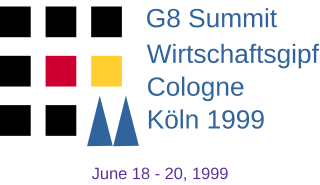
The 25th G8 Summit was held in Cologne, Germany, on 18–20 June 1999. The venue for this summit meeting was the Museum Ludwig in the central city.

The 24th G8 Summit was held in Birmingham, England, United Kingdom on 15–17 May 1998. The venue for this summit meeting was the International Convention Centre.

The 23rd G8 summit was held on June 20–22, 1997 in Denver, Colorado, United States. The venue was the newly constructed Denver Public Library in downtown Denver. The locations of previous G8 summits to have been hosted by the United States include: Dorado, Puerto Rico (1976), Williamsburg, Virginia (1983), and Houston, Texas (1990).

The 13th G7 Summit was held in Venice, Italy between 8 and 10 June 1987. The venue for the summit meetings was the island of San Giorgio Maggiore in the Venetian lagoon.

The 12th G7 Summit was held in Tokyo, Japan between May 4 and May 6, 1986. The venue for the summit meetings was the State Guesthouse in Tokyo, Japan.

The 11th G7 Summit was held in Bonn, West Germany between May 2 and May 4, 1985. The venue for the summit meeting was at the former official residence of the Chancellor of the Federal Republic of Germany in Bonn, the Palais Schaumburg.

The 10th G7 Summit was held in London, England, United Kingdom from 7 to 9 June 1984. The venue for the summit meetings was Lancaster House in London.

The 8th G7 Summit was held in Versailles, France from 4 to 6 June 1982. The venue for the summit meetings was at the Palace of Versailles.

The 18th G7 Summit was held in Munich, Germany between 6 and 8 July 1992. The venue for the summit meetings was at the Residenz palace in central Munich.

The 19th G7 Summit was held in Tokyo, Japan, on July 7–9, 1993. The venue for the summit meetings was the State Guesthouse in Tokyo, Japan.
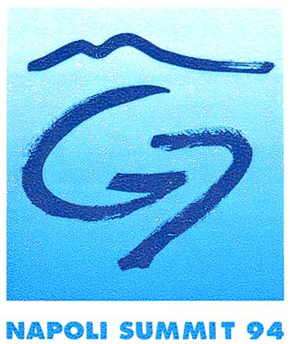
The 20th G7 Summit was held in Naples, Italy, on 8–10 July 1994. The venue for the summit meetings was the former Royal Palace in Naples.

The 22nd G7 Summit was held in Lyon, France, on 27–29 June 1996. The venue for this summit meeting was the Museum of Contemporary Art, Lyon . The locations of previous summits to have been hosted by France include: Rambouillet (1975), Versailles (1982), and Paris (1989).
![]() Media related to 29th G8 summit at Wikimedia Commons
Media related to 29th G8 summit at Wikimedia Commons